Saint Patrick’s Day is one of the most popular holidays in the world. Read our blog to find out the best celebrations you can travel to next year!
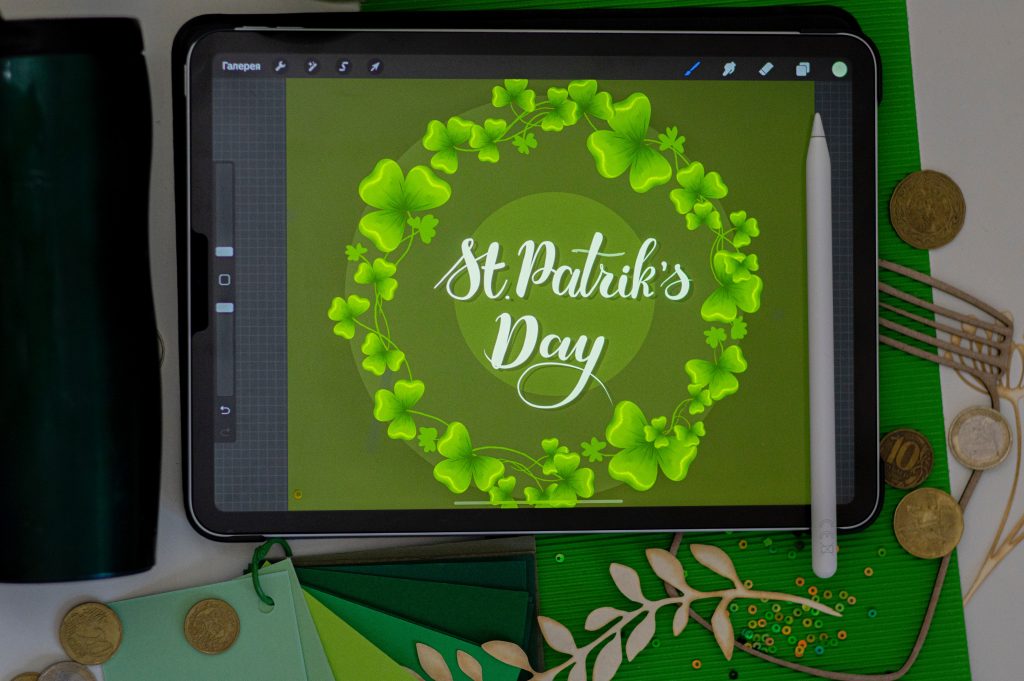
The Origin of St. Patrick’s Day
The Patron Saint of Ireland was born into either a Scottish or English family in the fourth century. They captured him as a teenager. The Niall of the Nine Hostages, who was to become a King of all of Ireland, was the culprit. He was a slave in Ireland and worked as a shepherd. Patrick worked in terrible conditions for six years. He drew comfort in the Christian faith that so many of his people had abandoned under Roman rule.
Patrick had a dream that encouraged him to flee his captivity. He dreamt of to heading south. This was where a ship was to be waiting for him. He traveled over 200 miles from his Northern captivity to Wexford town. Here, sure enough, a ship was waiting to enable his escape.
Arrival to England
Upon arrival in England, he was captured by brigands and returned to slavery. He escaped after two months and spent the next seven years traveling Europe seeking his destiny.
During this time he furthered his education and studied Christianity at the Lerin Monastery in France. He returned to England as a priest. Again a dream greatly influenced him. He became convinced that the Irish people were calling out to him to return to the land of his servitude.
He went to the Monastery in Auxerre where it was decided that a mission should be sent to Ireland. Patrick was not selected for this task to his great disappointment. The monk that was selected was called Paladius. He died before he could reach Ireland and a second mission was decided upon.
Ascending as a Bishop
Patrick was made a Bishop by Pope Celestine in the year 432. Together with a small band of followers, he traveled to Ireland to commence the conversion.
Patrick confronted the most powerful man in Ireland Laoghaire. The High King of Tara. He knew that if he could gain his support that he would be safe to spread the word throughout Ireland. To get his attention Patrick and his followers lit a huge fire to mark the commencement of Spring. Tradition had it that no fire was to be lit until the Kings fire was complete. However, Patrick defied this rule and courted a confrontation with the King.
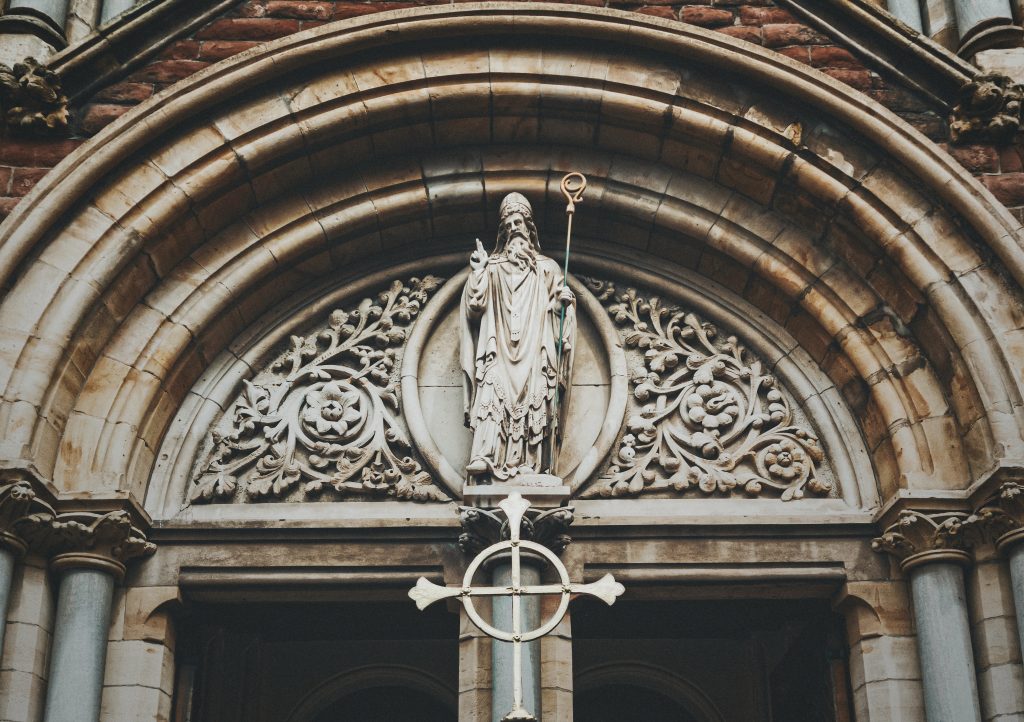
Confrontation with the King
The King rushed into action and traveled with the intention of making war on the holy delegation. Patrick calmed the King. With quiet composure, he impressed the King that he had no other intention; then than spreading the word of the Gospel. The King accepted the missionary. Although, much to the dismay of the Druids. They feared for their own power and position in the face of this new threat. They commanded that he make snow fall. Patrick declined to do so stating that this was God’s work. Immediately it began to snow, only stopping when Patrick blessed himself.
The Significance of the Shamrock
Still trying to convince the King of his religion Patrick grasped at some Shamrock growing on the ground. He explained that there was but one stems on the plant. Yet, three branches of the leaf, represent the Blessed Trinity. The King was impressed with his sincerity. He granted him permission to spread the word of his faith, although he did not convert to Christianity himself.
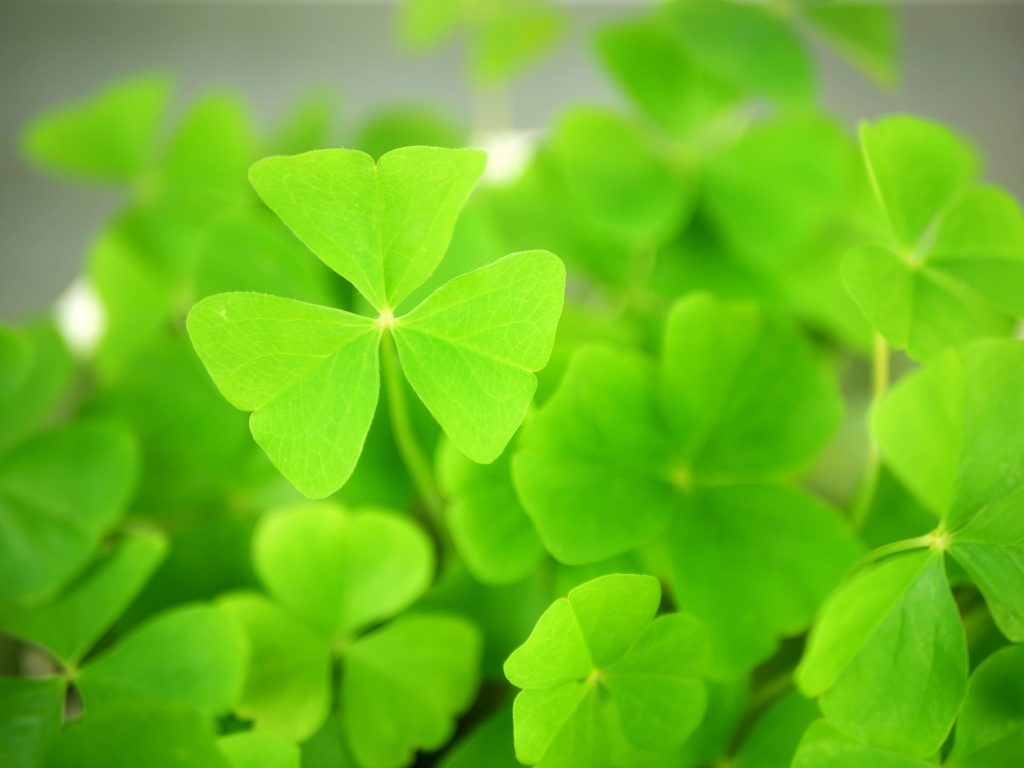
Patrick and his followers were free to spread their faith throughout Ireland and did so to great effect. He drove paganism (symbolized by the snake) from the lands of Eireann.
Pilgrimage
Patrick was tempted by the Devil whilst on a pilgrimage at Croagh Patrick. For his refusal to be tempted, God rewarded him with a wish. Patrick asked that the Irish be spared the horror of Judgement Day. Additionally, he himself is allowed to judge his flock. Thus, the legend that Ireland will disappear under a sea of water seven years before the final judgment, was born
Death and Legacy
Patrick died on March 17th in the year 461 at the age of 76. It is not known for sure where his remains were laid. Although Downpatrick in County Down in the North of Ireland is thought to be his final resting place.
His influence is still felt to this day. Nations the world over commemorate him on March 17th of every year.
Best Places to Celebrate
Dublin
Commemorating the anniversary of the death of Ireland’s patron saint, St Patrick’s Day is celebrated as a national holiday and is a showcase of Irish pride. Each year the country comes to life in vibrant color with trad music sessions, cèilidh (Irish dance parties), costumes, comedy, and plenty of great craic in the pub. Subtle it is not.
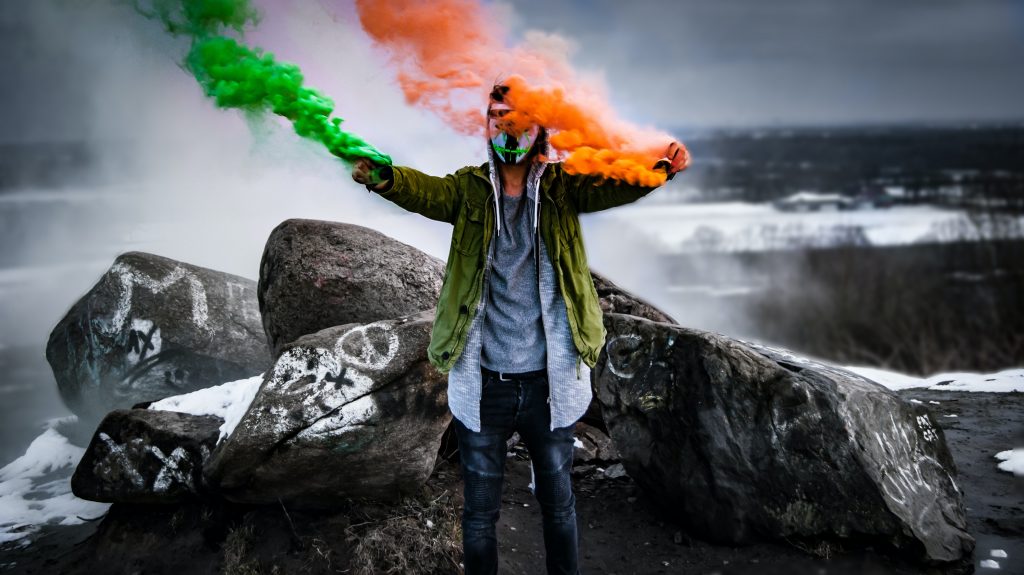
Although the entire country will join in the celebrations, Dublin is at the center of the action. The capital doesn’t dye the River Liffey green – that’s the Chicago River in the US – but you can expect to see more than enough of emerald-colored shamrocks. When Saint Patrick first introduced Christianity to Ireland, he was said to have used the shamrock as a metaphor for the Holy Trinity. That’s why you’ll see it everywhere.
One of the best ways to experience Dublin during Paddy’s Day is to hit the streets and soak up the atmosphere. It’s often the small things that showcase the Irish spirit the most like the keen camaraderie and bars teeming with people ready to let loose and have fun.
Parade in Dublin
First hosted in 1931, half a million people are expected to line the streets of Dublin for the annual St Patrick’s Day parade in 2023. It takes place on Friday, March 17.
Featuring marching bands from across Ireland as well as North America, there will be more than 4000 people taking part in the parade. This includes creative pageants and larger, showpiece performances. The theme for 2023 will be ‘Mar a chéile sinn‘, which is Irish for ‘We are one’.
Parade Route
The parade will leave Parnell Square at noon and then follow a 2.5 km-long route along O’Connell Street, crossing the Liffey into Westmoreland Street, before passing Trinity College. It will then go along Dame Street turning left at Christchurch Cathedral before ending at St Patrick’s Cathedral. It’s all over by 2 pm.
No, you can just turn up and find a spot along the route. However, there are five covered grandstands located along the Parade route which require tickets. These are located at O’Connell Street, Parnell Square, Westmoreland Street, Christchurch, and St Patrick’s Cathedral. Note that tickets sell out quickly. Book early to guarantee a seat. Prices start from €100 and can be bought online.
Boston
Boston is a storied city, thanks in part to the immigrants who settled here. One of the most defining groups came from Ireland starting in the early 1800s. Over time, the spirit of the Irish captured a large part of Boston’s culture, and even inspired the name of our NBA team. Today, Boston is the most Irish city in the US, with almost 25% of residents claiming some element of Irish heritage. So even if you don’t have any ancestry from the Emerald Isle, each year when St. Patrick’s Day arrives, everyone finds a reason to celebrate.
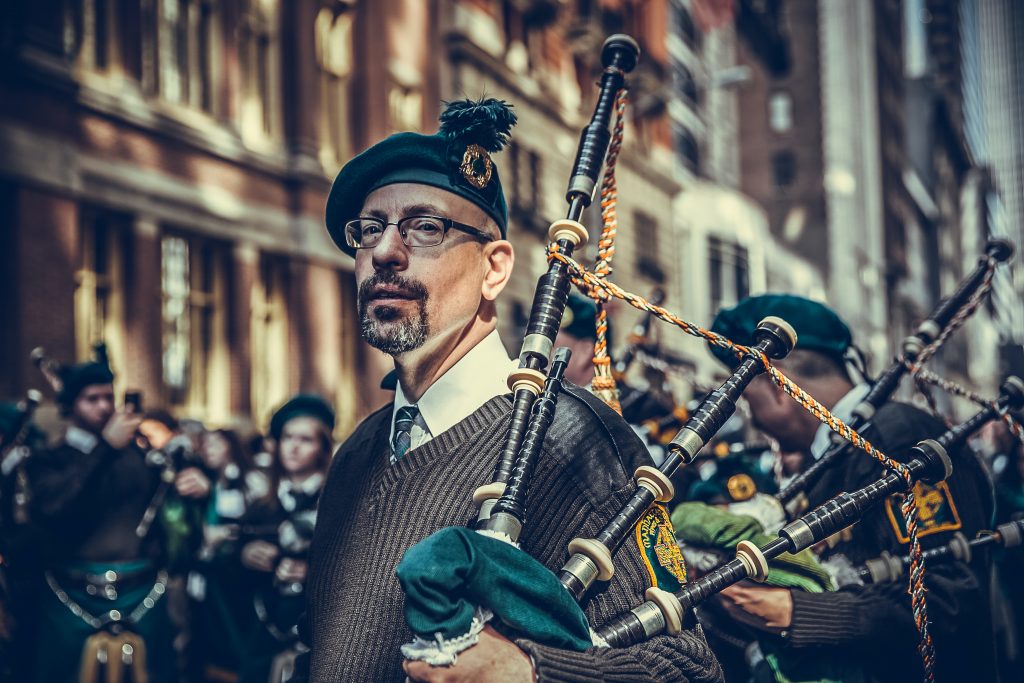
Since 1901, the Boston St. Patrick’s Day Parade has been at the heart of the city’s annual celebrations. This year, the parade will take place on Sunday, March 19 starting at 1pm and wind through South Boston. Wear green, select a place along the parade route and enjoy the fun.
While you’re embracing the spirit of the day, explore the Irish Heritage Trail. It’s an informative, self-guided tour through some of the most celebrated landmarks in the downtown and Back Bay neighborhoods of Boston. After all that fresh air, it’s time to take in some authentic Irish food and drink.
Irish Heritage Trail
Boston is often called the capital of Irish America because of its thriving Irish community, which dates back to colonial times and continues to the present day. The Irish Heritage Trail is a self-guided, three-mile walking tour that takes you through Boston’s downtown, North End, Beacon Hill, and Back Bay. You’ll learn about famous politicians, artists, matriarchs, and war heroes, part of a rich tradition of rebellion, leadership, and triumph that personifies the Boston Irish. (617) 696-9880.
Harpoon Brewery St. Patrick’s Day Festival
Breweries have been popping up all over Boston and beyond, but Harpoon Brewery has been around for quite some time. This Boston-based company first launched in 1986. Harpoon Brewery’s annual St. Patrick’s Day Festival is one of their big events (HarpoonFest and OctoberFest are two of the others), complete with live Irish music and samples of all sorts of beers, including the latest seasonal offerings.
Entry is typically free, but keep in mind that their festivals are popular and do get crowded, so plan to get there early to avoid waiting in line. And while you’re in the city’s Seaport neighborhood, check out our top picks for things to do.
Dropkick Murphy’s Show
Each St. Patrick’s Day, the Dropkick Murphys, the Irish punk band behind the song, “I’m Shipping Up to Boston,” roll into town for a series of performances in Boston. In 2021, the concert was held virtually but streamed live on March 17. Past venues for performances have included the House of Blues and TD Garden.
Chicago
The Chicago River dyeing is one of the most unique St. Patrick’s Day celebrations in the world. Typically held the Saturday before St. Patrick’s Day (the same day as the downtown parade), this bucket-list event is a beloved tradition that dates back over half a century.
The first time the Chicago River was dyed green was in 1962, thanks to a suggestion from the local plumbers union. That first river dyeing turned the waters green for nearly a month — nowadays, the color only lasts for a few hours. The plumbers union still holds the river-dyeing honors today, and their environmentally friendly dye formula remains a closely kept secret.
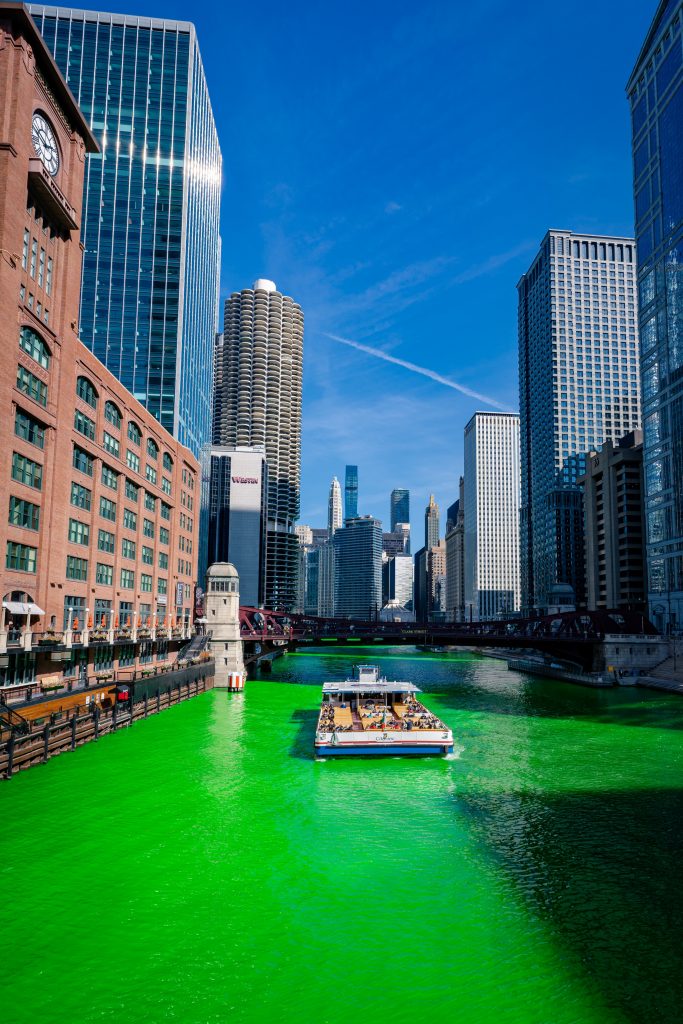
Be sure to get there early for a good view and to watch the union members working their magic from various boats. The river dying kicks off early and always has lots of spectators lining the Chicago Riverwalk and bridges between State and Columbus. The brilliant green color only lasts a few hours, so be sure to catch a glimpse and snap some photos before heading off to a local tavern to enjoy some green beer.
Parade
The annual Chicago St. Patrick’s Day Parade is one of the largest parades in the country and the centerpiece of the city’s unforgettable St. Patrick’s Day celebrations.
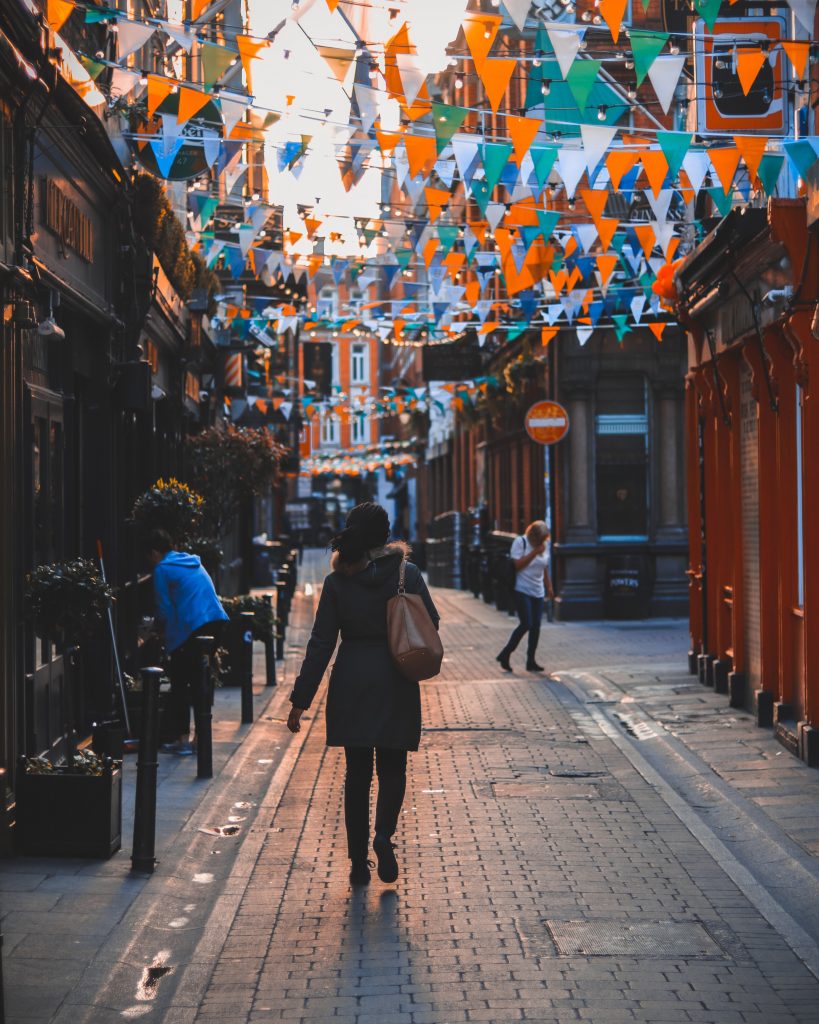
Don your best green outfit or kilt and grab a good spot before the parade starts at noon. You won’t want to miss The Shannon Rovers Irish Pipe Band, the city’s premier Irish band, who have been leading the procession since the first official parade in 1956. You’ll alsosee ample of colorful floats waving their Irish flags high, troops of Irish step dancers, marching bands, bagpipers, and more during the three-hour celebration.
River Cruises
Admire the emerald green river from the best seats in the house. Chicago’s river cruises offer a one-of-a-kind perspective of the day’s festivities. Watch the waters turn green, enjoy themed cocktails, hear live bagpipe music, and wave at the thousands of spectators lining the river’s banks.
- St. Patrick’s Day Clover Cruise from Chicago’s First Lady
- St. Patrick’s Day Cruise from Wendella
- St. Patty’s Day Green River Cruises from Chicago Fireboat Tours
- Architecture River Cruise from Shoreline Sightseeing
Cuisine
Looking for some corned beef and cabbage? How about the perfect pint of Guinness or a boozy Shamrock Shake? Maybe you’re looking for a spot to grab a bite while watching the Chicago River dyeing? Well you’re in the right place! Celebrate St. Patrick’s Day at one of the many restaurants and bars in the city that will be featuring an array of traditional fare and creative twists on classics. Thanks to Chicago’s immigrant roots and robust Irish community, finding Irish fare is easy. The city’s restaurants always go all out with the food, and of course, drink specials. Check out our more than adequate round-up of festive food and drink specials all around the city.
Montserrat
Montserrat’s Irish heritage dates back to the 17th century when the island became a haven for Irish Catholics who had been persecuted on other Caribbean islands. The Irish were originally sent into exile and devastating indentured servitude by Cromwell. The island is still a British protectorate. By 1678, a census showed that more than half the people on the island were Irish, so it is hardly surprising that the Irish had such a strong influence on the island’s developing culture.
Festival
The activities for the week include a freedom run from Cudjoe Head to Salem Park, a nature hike, and a junior calypso competition. Events will take place in parks and buildings across the north of the island, while much of the activity on St. Patrick’s Day itself will center on a reconstructed slave village. Here, stalls will sell traditional food, locals will gather to play traditional games such as dominoes and marbles, and masquerade dancers will put on colorful displays.
This Irish history is still evident today from the moment visitors arrive at the airport in Montserrat and receive a shamrock-shaped stamp in their passports. On St. Patrick’s Day, visitors will notice many locals wearing the national dress – in which green is the dominant color – and both Guinness and green Heineken are available in bars, as well as the traditional rum punch cocktails.
Other Events
African-inspired events such as the freedom run and masquerade dancing commemorate the slave history in Montserrat, specifically an unsuccessful uprising that took place on St. Patrick’s Day in 1768. This year marks the 250 anniversary of the uprising.
Though a volcano erupted on the island in the 1990s, the Montserrat people have since rebuilt their infrastructure, including a new airport
New York City
The holiday’s flagship event is the grand in-person return of The New York City Saint Patrick’s Day Parade. Considered to be the world’s oldest and largest parade, this year’s event marks the 261st anniversary after a pandemic-fueled virtual event last year.
On Thursday, March 17, beginning at 11 am, the parade route will travel up Fifth Avenue—beginning on East 44th and ending on East 79th—with upwards of 150,000 people marching and drawing about 2 million spectators. Since its conception in 1762, the event has been volunteer-run and continues to honor Irish and Irish-American pride through revelry and tradition, like the playing of bagpipes and singing of centuries-old tunes. If you’re unable to snag a prime spot along the route, watch a livestream of the event online via WNBC.com.
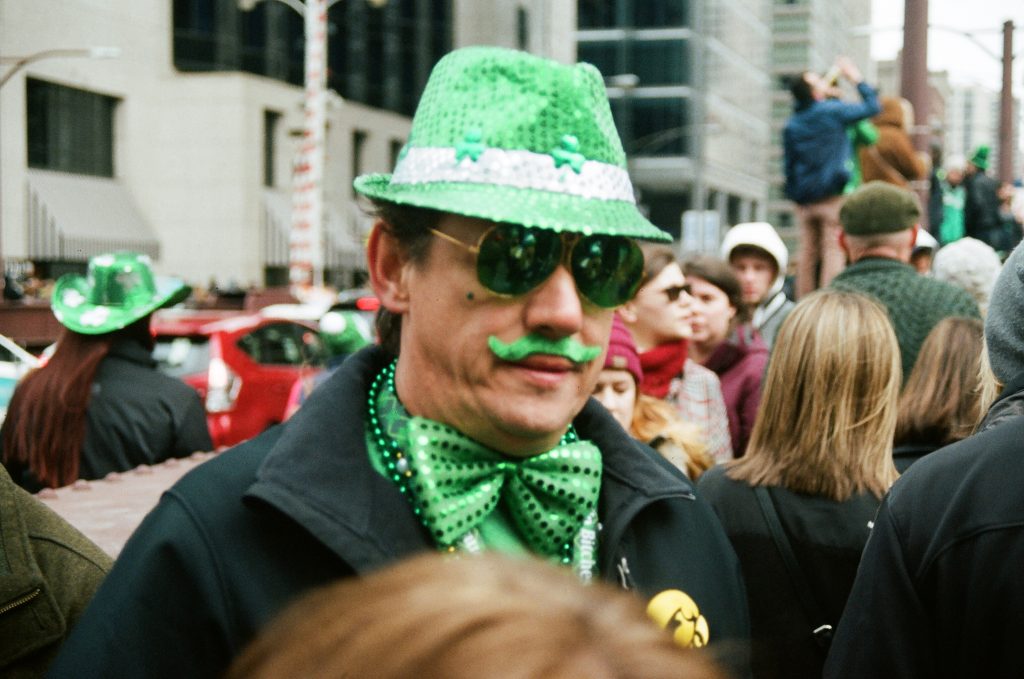
In addition to the parade, there are dozens of holiday happenings around the city to take advantage of from live music performances to a post-parade bar crawl and events at local Irish pubs. Here’s the ultimate guide to how to celebrate St. Patrick’s Day this year in NYC.
Parade History
The NYC St. Patrick’s Day Parade is one of New York City’s greatest traditions. The first parade was on March 17, 1762 — fourteen years before the signing of the United States Declaration of Independence. The first NYC St. Patrick’s Day Parade was comprised of a band of homesick, Irish ex-patriots and Irish military members serving with the British Army stationed in the colonies in New York. This was a time when the wearing of green was a sign of Irish pride but was banned in Ireland. In that 1762 parade, participants reveled in the freedom to speak Irish, wear green, sing Irish songs and play the pipes to Irish tunes that were meaningful to the Irish immigrants of that time.
Today, the NYC Parade marches up 5th Avenue and is reviewed from the steps of St. Patrick’s Cathedral by His Eminence, Timothy Cardinal Dolan, Archbishop of New York. Since it began, this tradition of marching past St. Patrick’s Cathedral has remained unchanged with the exception of the address. In the early years, the Parade would march past the Old St. Patrick’s Cathedral (now Basilica) located at the corner of Mott and Prince Streets in SoHo.
Parade Today
Today, the Parade starts at 44th Street and 5th Avenue at 11am and proceeds up the avenue to 79th Street. Throughout the day along the Parade route, millions of spectators come to celebrate.
For the first few years, the NYC St. Patrick’s Day Parade was organized by military units. However, after the War of 1812, Irish fraternal and beneficial societies took over the duties of hosting and sponsoring the event. Around 1851 the “Irish” 69th Regiment began to lead the marchers. Also at that time, the Ancient Order of Hibernians (AOH) became the official sponsor of the Parade as the individual societies merged under a single Grand Marshal. Today the 69th Regiment is still the first group to lead the Parade up 5th Avenue. They are followed by various Irish societies of NYC, the 32 Irish county societies, schools, colleges, Emerald societies and Irish language and nationalist societies. In the early 1990’s, the Parade was attacked for its traditional values and, in the resulting law suits, the organizer’s rights were upheld at the US Supreme Court level.
Notable Years
In 1992, the National AOH directed all AOH organizations to form separate corporations to run events such as the Parade. The NYC St. Patrick’s Day Parade today is run under a separate corporation, St. Patrick’s Day Parade, Inc.
Post 9/11
In 2002, NYC St. Patrick’s Day Parade was dedicated to the “Heroes of 9/11 honoring the police, fire and other rescue workers. At midday the entire Parade stretching one and half miles paused for two minutes. The marchers turned to face south towards the “Twin Towers” as Edward Cardinal Egan said a prayer for the victims of 9/11. It is said that was the first time in history that one could hear a pin drop on 5th Avenue. That year’s Parade was the largest to date with an estimated 300,000 marchers and three million spectators lining 5th Avenue. It was also the first time in the Parade’s history that the President of Ireland (Mary Mc Aleese) reviewed the Parade.
In 2011, the Parade celebrated its 250th anniversary with the world-renowned author Mary Higgins Clark as its Grand Marshal. Five years later, the NYC St. Patrick’s Day Parade has much to celebrate and for which to be thankful. This year is the Ireland 2016 Centenary Year. Senator George Mitchell is the Grand Marshal. And the Parade is scheduled to have about 200,000 people marching up the avenue.
